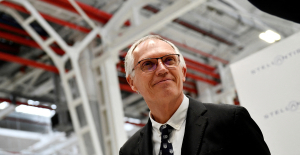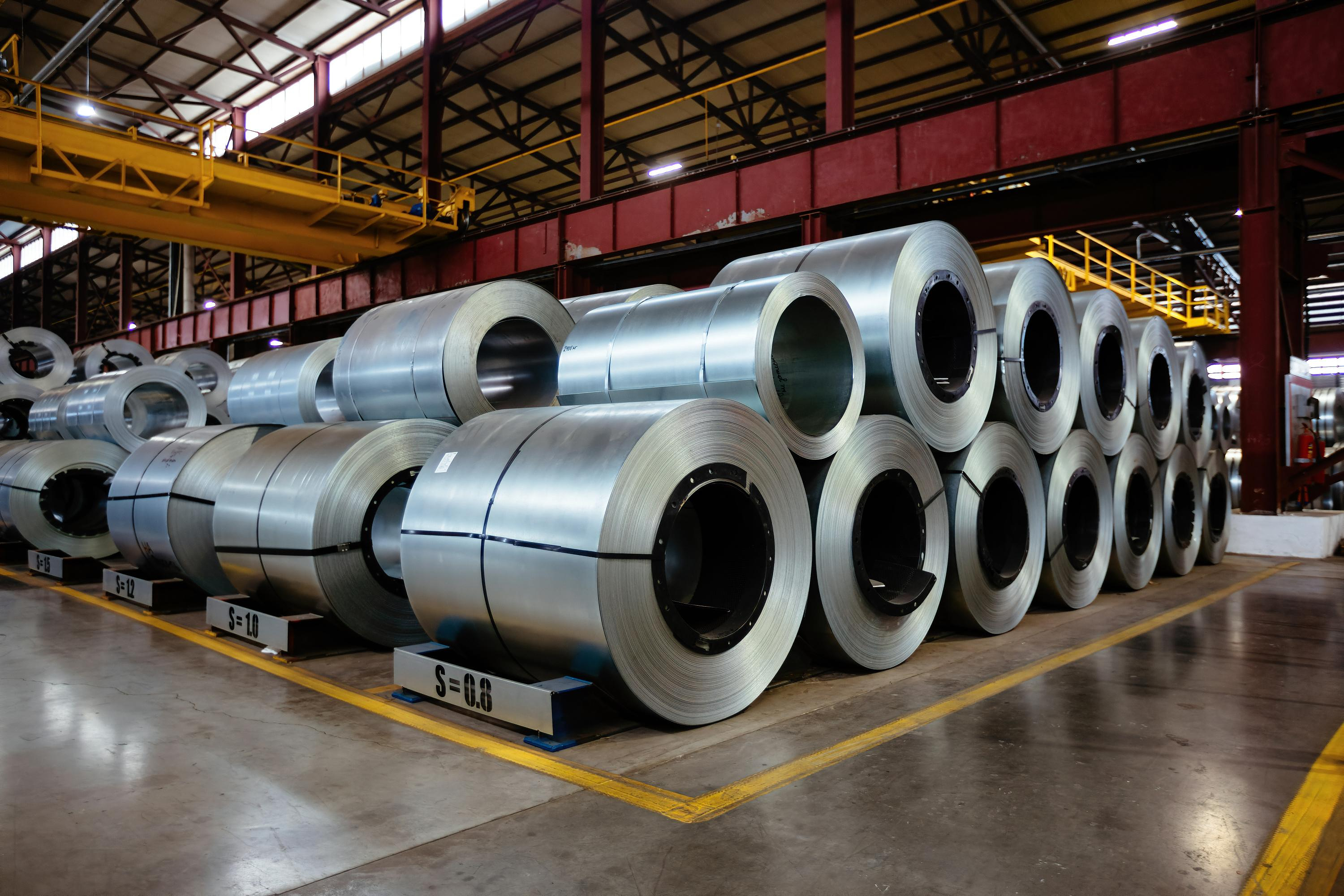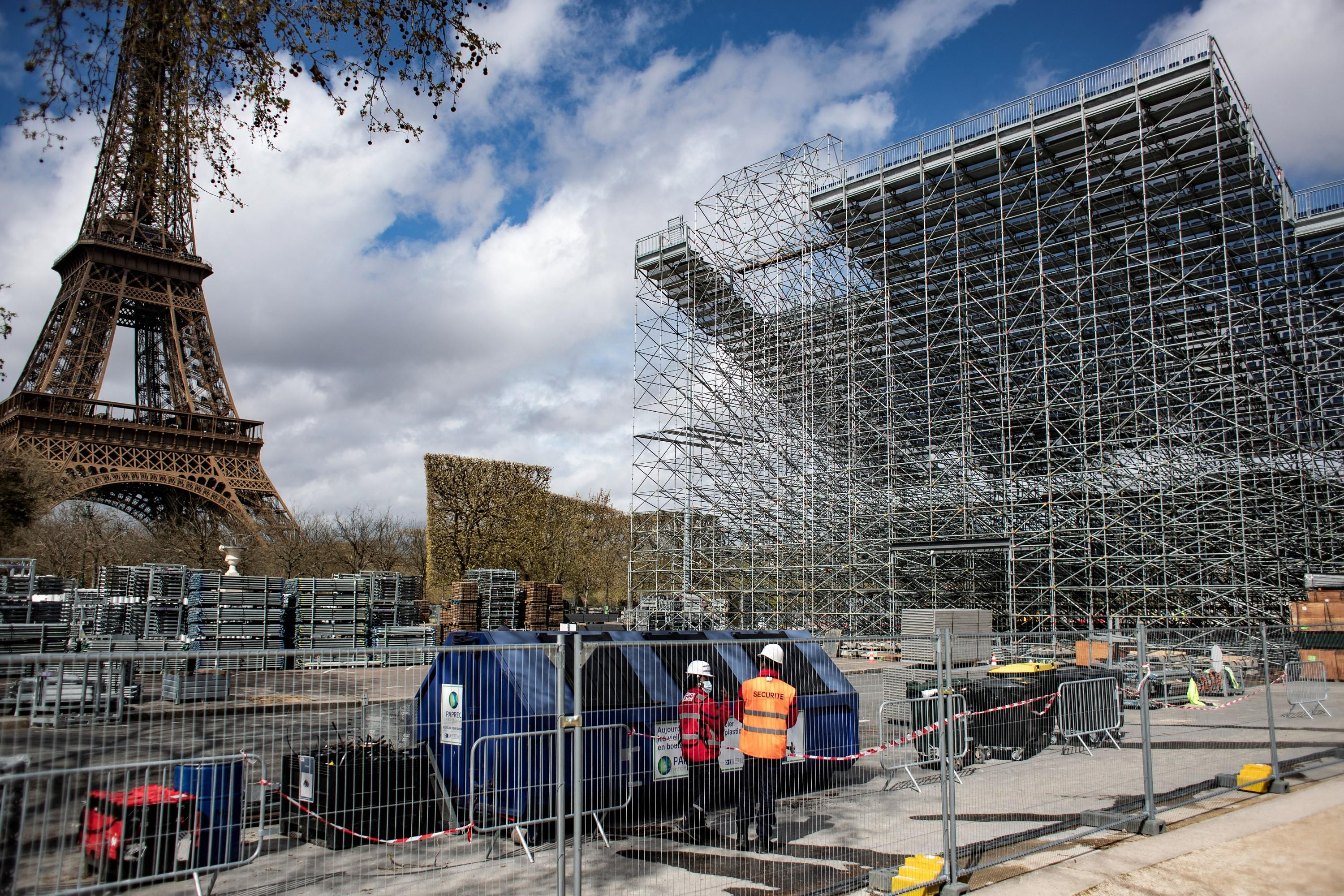It took around 30 years to restore the Emscher, which had long been used as a sewage river, to a near-natural state. It cost around 5.5 billion euros to free the approximately 83-kilometer-long river from sewage inflows. Among other things, four large sewage treatment plants, 430 kilometers of sewers and three large pumping stations were built for this purpose. This conversion is considered one of the largest infrastructure projects in Europe. Chancellor Olaf Scholz (SPD) came to the region on Thursday to celebrate.
"The successful completion of the project will create a shining example for similar processes far beyond Germany," said Scholz at a ceremony at the Wasserkreuz in Castrop-Rauxel, where he planted a first vine for the new Emscher vineyard.
North Rhine-Westphalia's Building Minister Ina Scharrenbach (CDU) emphasized that the conversion would create many natural areas and new "city and open space qualities on the water" would become visible. However, the “degree” is not entirely correct. Although the river has been free of wastewater since the beginning of the year, renaturation work is ongoing. The Emscher is still straightened over a length of around 55 kilometres, but the near-natural transformation of the water body and its tributaries will only be completed in five years.
As the Federal Chancellor emphasized on Thursday, the know-how acquired in the Ruhr should benefit as many other regions with similar problems as possible. The conversion of the Emscher has repeatedly attracted visitors from all over the world to the Ruhr area in recent years. Here they can study how a former cloaca becomes a clean river again and how the local residents slowly reclaimed the space around this body of water over decades.
According to the Emschergenossenschaft, there is a great deal of interest in the local work, especially in mining regions. In Colombia, for example, they want to redesign the heavily polluted Bogotá River based on the Emscher model. Employees of the Emschergenossenschaft were on site for consultations.
However, like the Emscher conversion, the project on the Rio Bogotá is likely to take around 30 years. A few years ago there were also visitors from Afghanistan who found out about water management and wastewater treatment made in North Rhine-Westphalia. Because there are hardly any sewage treatment plants in Afghanistan so far, the sewage seeps into the ground outside of the cities and thus pollutes the groundwater, the Kabul River is said to be even more polluted than the "old" Emscher.
The fact that the Emscher became a cesspool during coal mining was also due to the fact that underground canals could not previously be built in the Ruhr area, as they would have been damaged by the frequent subsidence. But since 1992, every body of water in the region has gradually had an underground counterpart through which the waste water is now drained to the sewage treatment plants. The above-ground streams were thus free of waste water and could then be converted to be more natural. Concrete base shells were removed, the embankments designed more versatile.
The Emschergenossenschaft, which is supported by 150 municipalities and companies and pays around 80 percent of the conversion costs, is not allowed to make any profits itself. However, it has subsidiaries such as Emscher Wassertechnik GmbH with around 60 employees and an annual turnover of around six million euros. This company deals in consulting and earns good money from engineering services. And at the invitation or mediation of GIZ or the federal government, some of the specialists also work abroad.
The conversion of the Emscher has also strengthened the business location and triggered an impulse of 13 billion euros, explained Uli Paetzel, head of the Emschergenossenschaft, with reference to calculations by the TU Dortmund. With the "successful liberation of the Emscher from its waste water load, we have created a highly modern water management infrastructure in the heart of the Ruhr area, Germany's largest conurbation".

 Knife attack in Australia: who are the two French heroes congratulated by Macron?
Knife attack in Australia: who are the two French heroes congratulated by Macron? Faced with an anxious Chinese student, Olaf Scholz assures that not everyone smokes cannabis in Germany
Faced with an anxious Chinese student, Olaf Scholz assures that not everyone smokes cannabis in Germany In the Solomon Islands, legislative elections crucial for security in the Pacific
In the Solomon Islands, legislative elections crucial for security in the Pacific Sudan ravaged by a year of war
Sudan ravaged by a year of war Covid-19: everything you need to know about the new vaccination campaign which is starting
Covid-19: everything you need to know about the new vaccination campaign which is starting The best laptops of the moment boast artificial intelligence
The best laptops of the moment boast artificial intelligence Amazon invests 700 million in robotizing its warehouses in Europe
Amazon invests 700 million in robotizing its warehouses in Europe Inflation rises to 3.2% in March due to gasoline and electricity bills
Inflation rises to 3.2% in March due to gasoline and electricity bills Olympic Games-2024: which professions are likely to strike during the competition?
Olympic Games-2024: which professions are likely to strike during the competition? Pizzas sold throughout France recalled for “possible presence” of glass debris
Pizzas sold throughout France recalled for “possible presence” of glass debris “As for a football player, there is a contract”: Carlos Tavares defends his remuneration of 36.5 million euros
“As for a football player, there is a contract”: Carlos Tavares defends his remuneration of 36.5 million euros Stellantis: shareholders validate the controversial remuneration of Carlos Tavares
Stellantis: shareholders validate the controversial remuneration of Carlos Tavares Dune 3 will be the last film of Denis Villeneuve's adaptation
Dune 3 will be the last film of Denis Villeneuve's adaptation Shane Atkinson, humble disciple of the Coen brothers
Shane Atkinson, humble disciple of the Coen brothers Outcry from publishers against the authorization of advertising for books on television
Outcry from publishers against the authorization of advertising for books on television Eddy de Pretto celebrates his “last party too many” at the Olympia
Eddy de Pretto celebrates his “last party too many” at the Olympia Skoda Kodiaq 2024: a 'beast' plug-in hybrid SUV
Skoda Kodiaq 2024: a 'beast' plug-in hybrid SUV Tesla launches a new Model Y with 600 km of autonomy at a "more accessible price"
Tesla launches a new Model Y with 600 km of autonomy at a "more accessible price" The 10 best-selling cars in March 2024 in Spain: sales fall due to Easter
The 10 best-selling cars in March 2024 in Spain: sales fall due to Easter A private jet company buys more than 100 flying cars
A private jet company buys more than 100 flying cars This is how housing prices have changed in Spain in the last decade
This is how housing prices have changed in Spain in the last decade The home mortgage firm drops 10% in January and interest soars to 3.46%
The home mortgage firm drops 10% in January and interest soars to 3.46% The jewel of the Rocío de Nagüeles urbanization: a dream villa in Marbella
The jewel of the Rocío de Nagüeles urbanization: a dream villa in Marbella Rental prices grow by 7.3% in February: where does it go up and where does it go down?
Rental prices grow by 7.3% in February: where does it go up and where does it go down? Europeans: the schedule of debates to follow between now and June 9
Europeans: the schedule of debates to follow between now and June 9 Europeans: “In France, there is a left and there is a right,” assures Bellamy
Europeans: “In France, there is a left and there is a right,” assures Bellamy During the night of the economy, the right points out the budgetary flaws of the macronie
During the night of the economy, the right points out the budgetary flaws of the macronie Europeans: Glucksmann denounces “Emmanuel Macron’s failure” in the face of Bardella’s success
Europeans: Glucksmann denounces “Emmanuel Macron’s failure” in the face of Bardella’s success These French cities that will boycott the World Cup in Qatar
These French cities that will boycott the World Cup in Qatar Dortmund-Atlético: two months before the Euro, Griezmann warms up the engine
Dortmund-Atlético: two months before the Euro, Griezmann warms up the engine Football: Bernd Hölzenbein, 1974 world champion, died at 78
Football: Bernd Hölzenbein, 1974 world champion, died at 78 'Everything comes to an end': Surfing legend Kelly Slater moves closer to retirement
'Everything comes to an end': Surfing legend Kelly Slater moves closer to retirement Athletics: the victory of a transgender athlete causes controversy in the United States
Athletics: the victory of a transgender athlete causes controversy in the United States


















